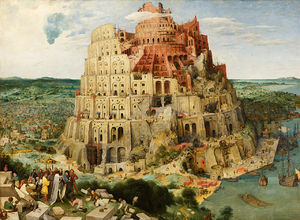Difference between revisions of "Compartmentalization of Knowledge"
m (→How it Works) |
|||
| Line 1: | Line 1: | ||
| − | [[File: | + | [[File:Pieter_Bruegel_the_Elder_-_The_Tower_of_Babel_(Vienna)_-_Google_Art_Project_-_edited.jpg|thumb|300px|Description]] |
====Description==== | ====Description==== | ||
Revision as of 11:10, 27 October 2013
Description
Knowledge is effectively compartmentalized (or put into "compartments") when different people not only have access to certain types of knowledge but are actually denied formally or via social norms or personal preferences from going beyond their allowable sphere.
Compartmentalizing knowledge has several effects. For one thing it prevents people from having a holistic view. (And since many of the phenomena that now exist can only be "understood" when several viewpoints and perspectives from various sets of knowledge.) Also, as in the Tower of Babel story in the Bible, it keeps people from different knowledge camps from communicating with each other. Finally it implicitly designates certain types of knowledge as "off limits" to some people, thus locking them out of any conversations which employed or built on the knowledge that was forbidden to them.
How it Works
Compartmentalizing knowledge takes different shapes in different times and places. One of the more obvious examples are academic departments in colleges or universities.

